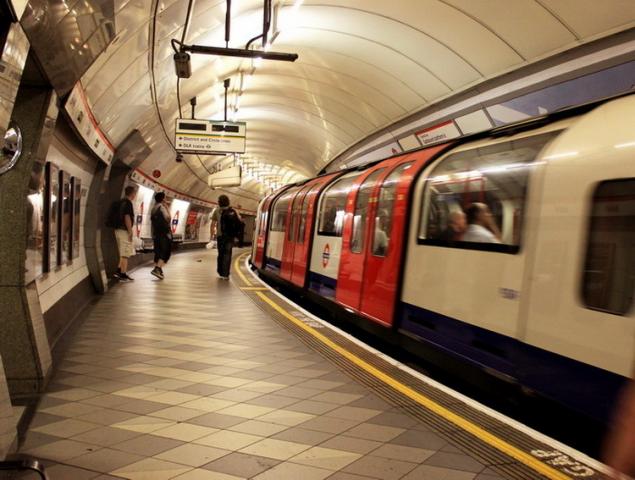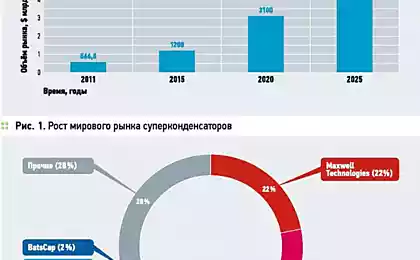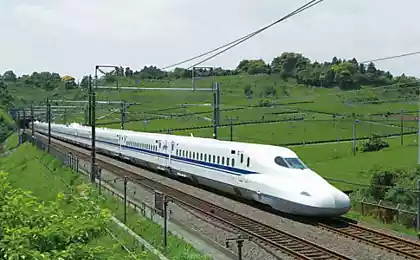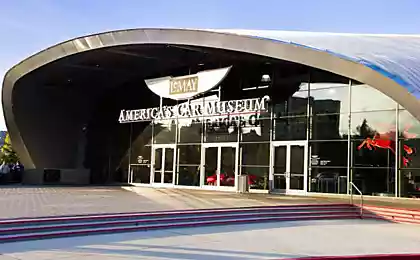519
Technology "Inverter" : the effective use of braking energy of the trains of the London underground
English engineers managed to develop an innovative system to increase the efficiency of use of energy generated by braking subway trains. One day the system work in test mode has freed up sufficient electricity to power 104 small houses for one year.
About regenerative thermogenesis that regenerative braking systems in locomotives involves converting the kinetic energy of the train into electrical energy by the traction motors (TED), operating mode of the generator. Stored energy is transferred to the overhead system, where it is used for braking the part of those steep gradients on which brakes to use irrational or returned to the substation.
In rail transport the existing regenerative braking system used primarily to maintain a given speed of a train during its movement along an inclined path, to power other trains in the same contact network or emergency braking in case of failure of the air brake system.
The recovery principle is widely used in hybrid cars, electric cars and electric buses, where the electricity generated by braking is used to charge the batteries and increases the vehicle range.
Briefly about the systems of regenerative and rheostatic braking
In the framework of the project "Inverter" it was proved that the regenerative braking system of the latest generation installed in metro trains can be used more effectively.

Project Inverter of the First Inverter in the framework of the project of the same name installed on the power Cloudesley Road in London underground line Victoria. Technical features configuration and operation principle of the system is not yet lighted, but the first tests confirm significantly more efficient use of regenerative braking of electric trains, the metro not only theoretically possible but feasible today. The released heat energy generated by braking of the composition and converted to complexes Inverter in electric will be used for engineering purposes underground station and the development of the existing network.

Implementation of the project "Inverter" is part of a large-scale "green" program, announced in January 2015, and involves the use of the metro substations newest gas power generators, repair of existing infrastructure, on upgrading rolling stock and line equipment.
Of particular importance to the successful implementation of the project is for a multi-million London is experiencing serious problems with the environment. Perhaps this is why the London mayor's office and the Ministry of transport of UK has been actively promoting a number of measures implemented under the green project.
Tectonosedimentary five-week test of the system based on innovative gas generators, brilliantly confirmed by theoretical calculations. Already in the first week of testing managed to release enough energy to provide electricity to the complex engineering of a major communications station of the London underground, as Holborn for 2 days.

The results of the experiment carried out only on a major London underground station vacated by Inverter for only 1 day, the power made 1 Megawatt, enough to supply the energy needs of the 104 small houses for a whole year. It is important that the transition to “green” inverter technology will allow not only to obtain significant additional electricity, but also significantly improve the environmental situation.
One of the leaders of the project Chris Tong shares his views: “... the Capabilities of modern regenerative braking systems require a radical revision of the key approaches to the effective utilization of the released energy. The project will allow not only to release additional energy resources, but will minimize the negative impact of carbon footprint generated during operation of existing systems."
According to statistics, the number of passengers annually using the services of the London ”Tube”, is very close to 1.2 billion. Of these, 89 million served by large stations. Application of the technology ”Inverter” in the entire London underground (LU) will allow you to regularly save up to 5% of the total annual amount of reinvestment in infrastructure London Tube.published
P. S. And remember, only by changing their consumption — together we change the world! © Join us at Facebook , Vkontakte, Odnoklassniki
Source: geektimes.ru/company/icover/blog/263920/
About regenerative thermogenesis that regenerative braking systems in locomotives involves converting the kinetic energy of the train into electrical energy by the traction motors (TED), operating mode of the generator. Stored energy is transferred to the overhead system, where it is used for braking the part of those steep gradients on which brakes to use irrational or returned to the substation.
In rail transport the existing regenerative braking system used primarily to maintain a given speed of a train during its movement along an inclined path, to power other trains in the same contact network or emergency braking in case of failure of the air brake system.
The recovery principle is widely used in hybrid cars, electric cars and electric buses, where the electricity generated by braking is used to charge the batteries and increases the vehicle range.
Briefly about the systems of regenerative and rheostatic braking
In the framework of the project "Inverter" it was proved that the regenerative braking system of the latest generation installed in metro trains can be used more effectively.

Project Inverter of the First Inverter in the framework of the project of the same name installed on the power Cloudesley Road in London underground line Victoria. Technical features configuration and operation principle of the system is not yet lighted, but the first tests confirm significantly more efficient use of regenerative braking of electric trains, the metro not only theoretically possible but feasible today. The released heat energy generated by braking of the composition and converted to complexes Inverter in electric will be used for engineering purposes underground station and the development of the existing network.

Implementation of the project "Inverter" is part of a large-scale "green" program, announced in January 2015, and involves the use of the metro substations newest gas power generators, repair of existing infrastructure, on upgrading rolling stock and line equipment.
Of particular importance to the successful implementation of the project is for a multi-million London is experiencing serious problems with the environment. Perhaps this is why the London mayor's office and the Ministry of transport of UK has been actively promoting a number of measures implemented under the green project.
Tectonosedimentary five-week test of the system based on innovative gas generators, brilliantly confirmed by theoretical calculations. Already in the first week of testing managed to release enough energy to provide electricity to the complex engineering of a major communications station of the London underground, as Holborn for 2 days.

The results of the experiment carried out only on a major London underground station vacated by Inverter for only 1 day, the power made 1 Megawatt, enough to supply the energy needs of the 104 small houses for a whole year. It is important that the transition to “green” inverter technology will allow not only to obtain significant additional electricity, but also significantly improve the environmental situation.
One of the leaders of the project Chris Tong shares his views: “... the Capabilities of modern regenerative braking systems require a radical revision of the key approaches to the effective utilization of the released energy. The project will allow not only to release additional energy resources, but will minimize the negative impact of carbon footprint generated during operation of existing systems."
According to statistics, the number of passengers annually using the services of the London ”Tube”, is very close to 1.2 billion. Of these, 89 million served by large stations. Application of the technology ”Inverter” in the entire London underground (LU) will allow you to regularly save up to 5% of the total annual amount of reinvestment in infrastructure London Tube.published
P. S. And remember, only by changing their consumption — together we change the world! © Join us at Facebook , Vkontakte, Odnoklassniki
Source: geektimes.ru/company/icover/blog/263920/
Olga Kachanova: how to raise children, run a household and be creative
How to do business alone and not go crazy























